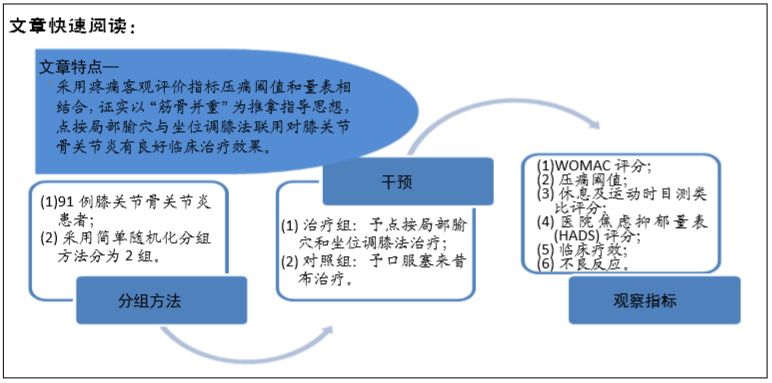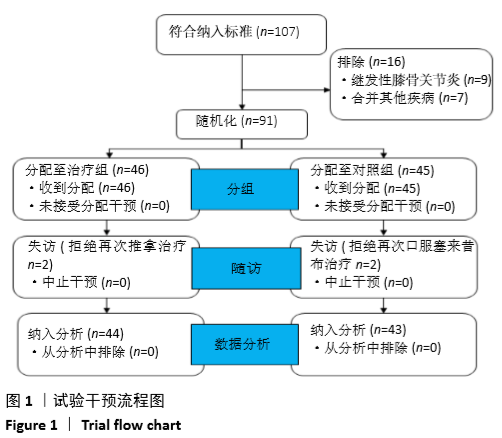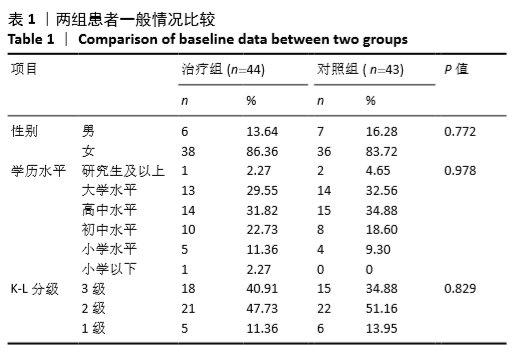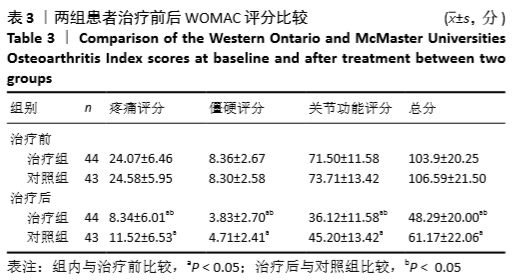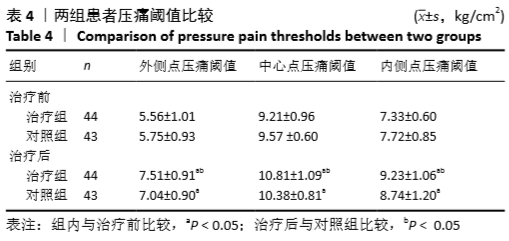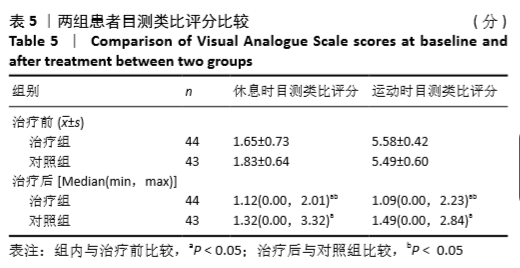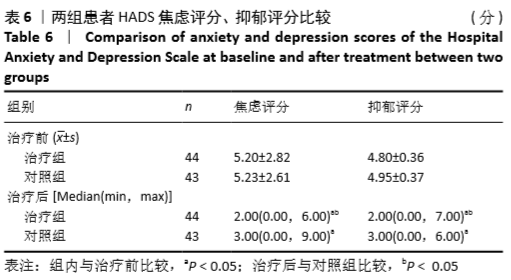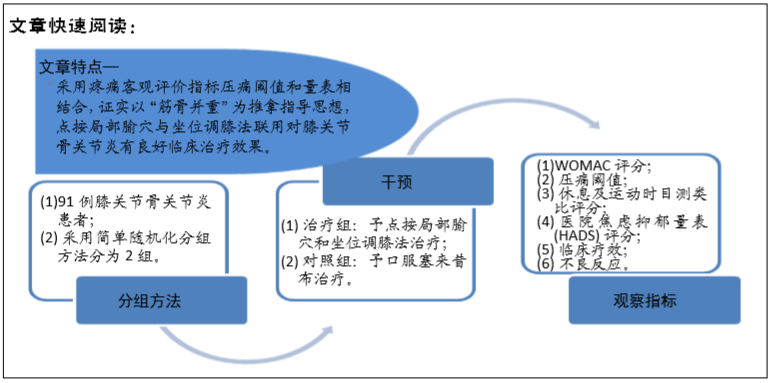[1] VINA ER, KWOH CK. Epidemiology of osteoarthritis: literature update. Current opinion in rheumatology.2018;30(2):160.
[2] ROOS EM, ARDEN NK. Strategies for the prevention of knee osteoarthritis.Nature Reviews Rheumatology.2016;12(2):92.
[3] JOHNSON VL, HUNTER DJ. The epidemiology of osteoarthritis.Best Pract Res Clin Rheumatol. 2014;28(1):5-15.
[4] JAMES SL, ABATE D, ABATE KH, et al. Global, regional, and national incidence, prevalence, and years lived with disability for 354 diseases and injuries for 195 countries and territories, 1990–2017: a systematic analysis for the Global Burden of Disease Study 2017. Lancet. 2018;392(10159):1789-1858.
[5] PEAT G, MCCARNEY R, CROFT P. Knee pain and osteoarthritis in older adults: a review of community burden and current use of primary health care.Ann Rheum Dis. 2001;60(2):91-97.
[6] 廖德发.我国骨性关节炎流行病学调查现状[J].微创医学, 2017,12(4): 521-524.
[7] WANG C, IVERSEN MD, MCALINDON T, et al. Assessing the comparative effectiveness of Tai Chi versus physical therapy for knee osteoarthritis: design and rationale for a randomized trial.BMC Complement Altern Med. 2014;14:333.
[8] DWYER L, PARKIN-SMITH GF, BRANTINGHAM JW, et al. Manual and manipulative therapy in addition to rehabilitation for osteoarthritis of the knee: assessor-blind randomized pilot trial.J Manipulative Physiol Ther. 2015;38(1):1-21.e2.
[9] LIU Q, NIU J, HUANG J, et al. Knee osteoarthritis and all-cause mortality: the Wuchuan Osteoarthritis Study. Osteoarthritis Cartilage. 2015;23(7):1154-1157.
[10] 中华医学会骨科学分会关节外科学组.骨关节炎诊疗指南(2018年版)[J].中华骨科杂志,2018,38(12):705-715.
[11] 胡杰,李平.膝骨关节炎保守治疗现状[J].中国医药科学,2015,5(5):30-32.
[12] 曹彭凯.2018年版《骨关节炎诊疗指南》解读[J].河北医科大学学报, 2018, 39(11), 1241-1243.
[13] 许辉,康冰心,孙松涛,等.膝关节骨性关节炎的中医临床研究进展[J].中医学报,2019,34(10):2124-2129.
[14] 艾健,房敏,孙武权,等. “筋骨失衡,以筋为先”理论在膝关节病中的应用探讨[J].中华中医药杂志,2014,29(8):2404-2406.
[15] 林勋,王建平,陈博,等.石氏伤科推拿整复手法结合红桂酊涂擦治疗膝骨关节炎的临床研究[J].中华中医药学刊,2018,36(1):23-26.
[16] XU Q, PANG J, ZHENG Y, et al. The effectiveness of manual therapy for relieving pain, stiffness and dysfunction in knee osteoarthritis: A systematic review and meta-analysis. Pain Physician. 2017;20(4):229-243.
[17] 许辉,肖涟波,康冰心,等.推拿手法治疗膝骨性关节炎临床疗效及安全性Meta分析[J].陕西中医,2019,40(12):1807-1813.
[18] CUDEJKO T, VAN DER ESCH M, VAN DEN NOORT JC, et al. Decreased pain and improved dynamic knee instability mediate the beneficial effect of wearing a soft knee brace on activity limitations in patients with knee osteoarthritis. Arthritis Care Res (Hoboken). 2019;71(8):1036-1043.
[19] DE PAULA GOMES CAF, LEAL‐JUNIOR ECP, DIBAI‐FILHO AV, et al. Incorporation of photobiomodulation therapy into a therapeutic exercise program for knee osteoarthritis: A placebo‐controlled, randomized, clinical trial. Lasers Surg Med. 2018;50(8):819-828.
[20] 梁红广,姜淑云,李建华,等.坐位调膝法治疗膝骨关节炎的疗效与步态分析研究[J].北京中医药,2018,37(2):135-138.
[21] 王国栋,杨凌云,何斌,等.塞来昔布联合双醋瑞因治疗老年退行性膝骨关节炎的有效性及安全性:随机对照临床试验方案[J].中国组织工程研究, 2017,21(36):5747.
[22] 田强,赵家友,郭汝松,等.腰部脊柱推拿治疗膝关节骨性关节炎30例[J].实用医学杂志,2016,32(6):1010-1012.
[23] 陈蔚,郭燕梅,李晓英,等.西安大略和麦克马斯特大学骨关节炎指数的重测信度[J].中国康复理论与实践,2010,16(1):23-24.
[24] 严攀,刘波,阴俊,等.西安大略和麦克马斯特大学骨关节炎指数用于膝退行性骨关节炎患者评定的反应度研究[J].中国康复医学杂志,2016,31(21): 215-216.
[25] Arendt‐Nielsen L, Simonsen O, Laursen MB, et al. Pain and sensitization after total knee replacement or nonsurgical treatment in patients with knee osteoarthritis: Identifying potential predictors of outcome at 12 months. Eur J Pain. 2018;22(6):1088-1102.
[26] IZUMI M, PETERSEN KK, LAURSEN MB, et al. Facilitated temporal summation of pain correlates with clinical pain intensity after hip arthroplasty. Pain.2017; 158(2):323-332.
[27] PETERSEN KK, ARENDT-NIELSEN L, SIMONSEN O, et al. Presurgical assessment of temporal summation of pain predicts the development of chronic postoperative pain 12 months after total knee replacement. Pain.2015;156(1):55-61.
[28] PETERSEN KK, GRAVEN-NIELSEN T, SIMONSEN O, et al. Preoperative pain mechanisms assessed by cuff algometry are associated with chronic postoperative pain relief after total knee replacement. Pain. 2016; 157(7): 1400-1406.
[29] PETERSEN KK, SIMONSEN O, LAURSEN MB, et al. The role of preoperative radiologic severity, sensory testing, and temporal summation on chronic postoperative pain following total knee arthroplasty.Clin J Pain. 2018;34(3): 193-197.
[30] Wylde V, Sayers A, Odutola A, et al. Central sensitization as a determinant of patients’ benefit from total hip and knee replacement.Eur J Pain. 2017;21(2): 357-365.
[31] SONI A, WANIGASEKERA V, MEZUE M, et al.Central Sensitization in Knee Osteoarthritis: Relating Presurgical Brainstem Neuroimaging and Pain DETECT‐Based Patient Stratification to Arthroplasty Outcome.Arthritis Rheumatol. 2019; 71(4):550-560.
[32] RAKEL B, VANCE C, ZIMMERMAN MB, et al. Mechanical hyperalgesia and reduced quality of life occur in people with mild knee osteoarthritis pain. Clin J Pain. 2015;31(4):315-322.
[33] HAWKER GA, MIAN S, KENDZERSKA T, et al. Measures of adult pain: Visual analog scale for pain (vas pain), numeric rating scale for pain (nrs pain), mcgill pain questionnaire (mpq), short‐form mcgill pain questionnaire (sf‐mpq), chronic pain grade scale (cpgs), short form‐36 bodily pain scale (sf‐36 bps), and measure of intermittent and constant osteoarthritis pain (icoap). Arthritis Care Res (Hoboken). 2011;63 Suppl 11:S240-S252.
[34] ZIGMOND AS, SNAITH RP. The hospital anxiety and depression scale.Acta Psychiatr Scand. 1983;67(6):361-370.
[35] AXFORD J, BUTT A, HERON C, et al. Prevalence of anxiety and depression in osteoarthritis: use of the Hospital Anxiety and Depression Scale as a screening tool. Clin Rheumatol. 2010;29(11):1277-1283.
[36] 国家中医药管理局.中医病证诊断疗效标准[M].南京:南京大学出版社, 1994:30-31.
[37] SHARMA L, SONG J, DUNLOP D, et al. Varus and valgus alignment and incident and progressive knee osteoarthritis. Ann Rheum Dis. 2010;69(11): 1940-1945.
[38] DUYMUS TM, MUTLU S, DERNEK B, et al. Choice of intra-articular injection in treatment of knee osteoarthritis: platelet-rich plasma, hyaluronic acid or ozone options. Knee Surg Sports Traumatol Arthrosc. 2017;25(2):485-492.
[39] MCALINDON TE, BANNURU RR, SULLIVAN MC, et al. OARSI guidelines for the non-surgical management of knee osteoarthritis. Osteoarthritis Cartilage. 2014;22(3):363-388.
[40] BENNELL KL, BUCHBINDER R, HINMAN RS. Physical therapies in the management of osteoarthritis: current state of the evidence. Curr Opin Rheumatol. 2015;27(3):304-311.
[41] MALFAIT AM, SCHNITZER TJ. Towards a mechanism-based approach to pain management in osteoarthritis. Nat Rev Rheumatol. 2013;9(11):654-654.
[42] 杨舟,艾坤,于隽,等.浅谈点按法的临床应用现状[J].中华中医药杂志, 2015,30(6):2026-2028.
[43] VERONESE N, STUBBS B, SOLMI M, et al. Association between lower limb osteoarthritis and incidence of depressive symptoms: data from the osteoarthritis initiative. Age Ageing. 2017;46(3):470-476.
[44] RATHBUN A M, STUART E A, SHARDELL M, et al. Dynamic effects of depressive symptoms on osteoarthritis knee pain. Arthritis Care Res (Hoboken). 2018;70(1):80-88.
[45] SHARMA A, KUDESIA P, SHI Q, et al. Anxiety and depression in patients with osteoarthritis: impact and management challenges. Open Access Rheumatol. 2016;8:103-113.
|
